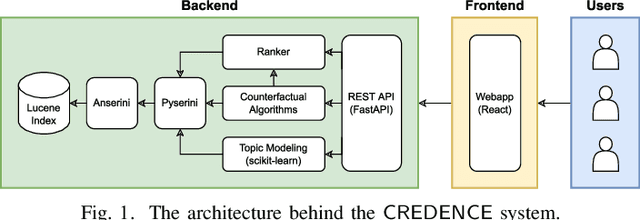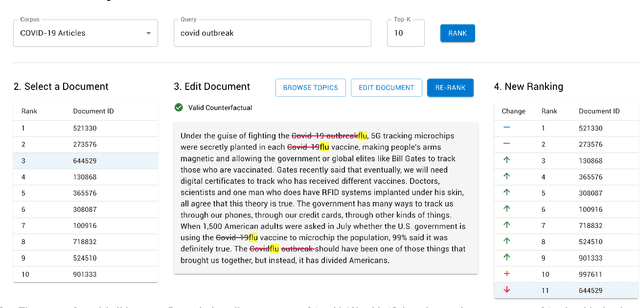Jaroslaw Szlichta
Explaining Expert Search and Team Formation Systems with ExES
May 21, 2024Abstract:Expert search and team formation systems operate on collaboration networks, with nodes representing individuals, labeled with their skills, and edges denoting collaboration relationships. Given a keyword query corresponding to the desired skills, these systems identify experts that best match the query. However, state-of-the-art solutions to this problem lack transparency. To address this issue, we propose ExES, a tool designed to explain expert search and team formation systems using factual and counterfactual methods from the field of explainable artificial intelligence (XAI). ExES uses factual explanations to highlight important skills and collaborations, and counterfactual explanations to suggest new skills and collaborations to increase the likelihood of being identified as an expert. Towards a practical deployment as an interactive explanation tool, we present and experimentally evaluate a suite of pruning strategies to speed up the explanation search. In many cases, our pruning strategies make ExES an order of magnitude faster than exhaustive search, while still producing concise and actionable explanations.
CREDENCE: Counterfactual Explanations for Document Ranking
Feb 10, 2023


Abstract:Towards better explainability in the field of information retrieval, we present CREDENCE, an interactive tool capable of generating counterfactual explanations for document rankers. Embracing the unique properties of the ranking problem, we present counterfactual explanations in terms of document perturbations, query perturbations, and even other documents. Additionally, users may build and test their own perturbations, and extract insights about their query, documents, and ranker.
Joint Variational Autoencoders for Recommendation with Implicit Feedback
Aug 17, 2020



Abstract:Variational Autoencoders (VAEs) have recently shown promising performance in collaborative filtering with implicit feedback. These existing recommendation models learn user representations to reconstruct or predict user preferences. We introduce joint variational autoencoders (JoVA), an ensemble of two VAEs, in which VAEs jointly learn both user and item representations and collectively reconstruct and predict user preferences. This design allows JoVA to capture user-user and item-item correlations simultaneously. By extending the objective function of JoVA with a hinge-based pairwise loss function (JoVA-Hinge), we further specialize it for top-k recommendation with implicit feedback. Our extensive experiments on several real-world datasets show that JoVA-Hinge outperforms a broad set of state-of-the-art collaborative filtering methods, under a variety of commonly-used metrics. Our empirical results also confirm the outperformance of JoVA-Hinge over existing methods for cold-start users with a limited number of training data.
 Add to Chrome
Add to Chrome Add to Firefox
Add to Firefox Add to Edge
Add to Edge